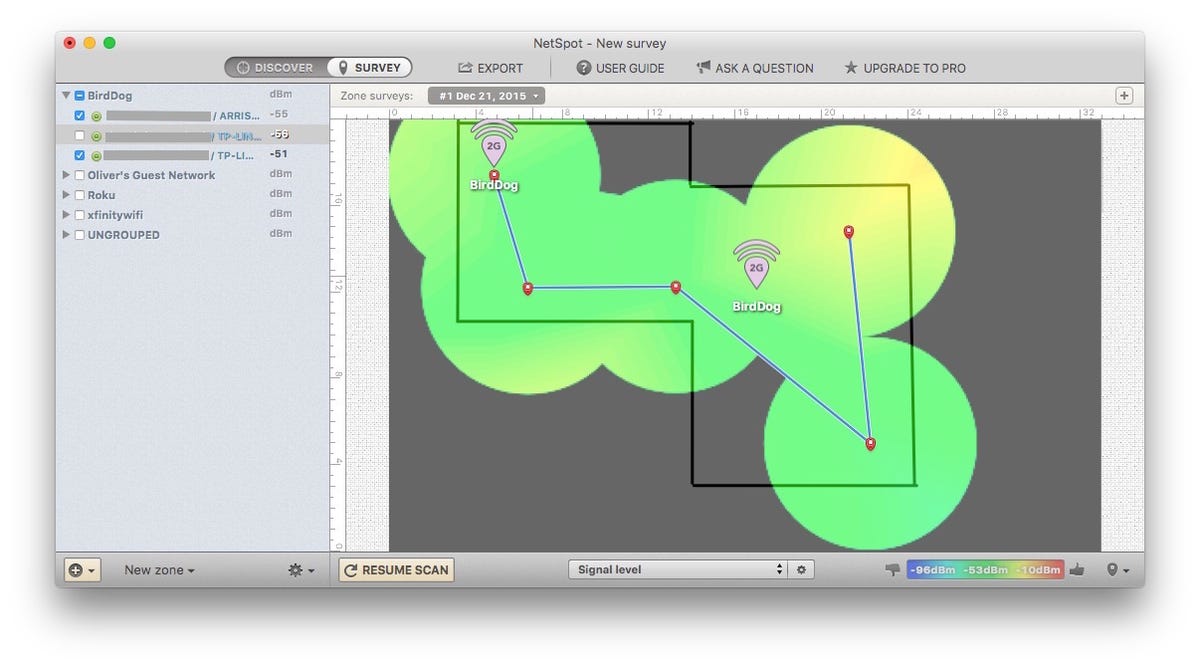I invested in two power line adapters earlier this year to extend the range of my Wi-Fi network at home. I put one in the kitchen and the other upstairs to increase the signal strength at the kitchen table and in the upstairs bedrooms. The adapters seem to be working, but with free Mac app NetSpot, I now have visual confirmation of their effectiveness.
NetSpot is a free app for OS X that scans nearby Wi-Fi networks as soon as you launch the app. For each network, it shows the signal strength, security type, channel information, and more. This information is displayed on the default Discover view, but if you toggle the slider switch at the top of the app to Survey, you can quickly build a heat map of your network.
On the Survey screen, you’ll first be asked to load or draw a map of your abode or simply use a blank canvas. I quickly sketched out a rough estimate of the perimeter of my home without bothering to draw any interior walls. After you click through a couple screens with options for the paid plans, click on your map to enter the first spot on your map. You’ll need to add at least three spots.

Screenshot by Matt Elliott/CNET
After plotting your points, click Stop Scan to see the results. Make sure to check the list of networks in the left panel. I found that NetSpot selected seemingly at random a handful of networks from my neighbors, so I had to uncheck theirs and click to select mine.
My network has three access points — my Comcast Wi-Fi router and the two power line adapters. What I found really interesting was after I created a heat map, I could select each access point individually or just the two downstairs, for example, from the left panel and the map would then display only the signal from the one or two I had selected. I found it useful to see all three points taken together and then individually to make sure I had my power line adapters positioned in the best spots.
The free plan lets you create only one zone per project, so I had to create a new survey for the second floor. The Pro plan costs $149 and the Enterprise plan costs $499 for additional zones, users and features, but the free tool is perfect for quickly mapping out the Wi-Fi network of a floor in a home, apartment or small office.
(Via Lifehacker)




